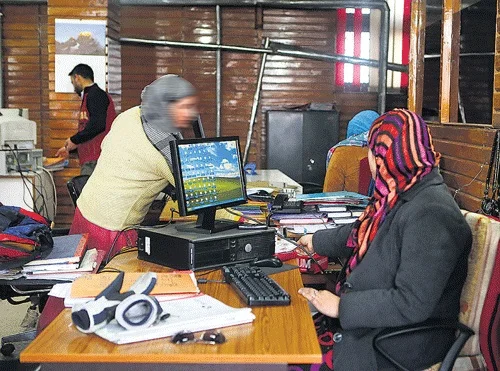
‘81.6 % Married Women Part Of Decision Making Process’
Srinagar- Even though the fifth in a series of National Family Health Survey(NFHS) had revealed the worsening status of J&K’s nutritional indicators especially among women, the erstwhile state has achieved a landmark in empowering women, giving them equal opportunities in every field and providing them power without any discrimination in last two years.
On December 12, the government released the fifth part of National Family Health Survey fact-sheets for India including J&K. Among the indicators, several included indicators are of great importance to J&K in terms of female health. This also included those indicators that are relevant to the Sustainable Development Goal of gender equality (SDG-5) in J&K.
Among the indicators released for the erstwhile state of J&K, several were based on education, educational freedom, economic contribution, economic freedom, household management and decision-making, perceived status within the household, and health that have always maintained an influence on the status of women in J&K.
The NFHS-5 factsheet on, “Women’s Empowerment (women age 15-49 years)” in J&K has shown an upliftment in the percentage of women who are participating in household decisions, if they are allowed to have a say in decisions related to their health, family and several other ‘empowering’ points.
As per NFHS-5, married women in J&K who are allowed to have a say in the decision making process in their family have been recorded at 81.6 percent during 2019-2020.
“Women who worked and were paid in cash in the last 12 months has recorded a maximum increase from 12.3 percent in NFHS-4(2015-16) to 18.4 percent in NFHS-5,” the report reads.
The report has also revealed that women in J&K who own a house or land (alone or jointly with others) have also increased in the last two years.
In NFHS-4, the percentage of such women was recorded at 33.1 percent that has relatively increased by almost 24 percent in NFHS-5.
“In NFHS-5 the percentage of such women was recorded at 57.3 percent in J&K and the percentage was much better in rural areas (60.8 percent) compared to urban areas (48.2 percent).
Notably, as per the report, the percentage of women in J&K who have a bank or savings account that they themselves use has also reached a maximum increase from 60.0 percent in NFHS-4 to 84.9 percent in NFHS-5. The number of such women was better in urban J&K (88.5 percent) than rural areas (83.5 percent).
“Women having a mobile phone that they themselves use have been recorded at 75.2 percent in NFHS-5 than 53.9 percent from NFHS-4.’ the report further reads.
In terms of health and safety, the report has revealed that the percentage of women who use hygienic methods of protection during menstrual period has increased by 7 percent.
“Women aged 15-24 years who use hygienic methods of protection during their menstrual period were recorded at 73.4 percent compared to 66 percent from NFHS-5.”
The number of such women was higher in urban J&K(85.8 percent) compared to rural J&K (69.6 percent).
Follow this link to join our WhatsApp group: Join Now
Be Part of Quality Journalism |
Quality journalism takes a lot of time, money and hard work to produce and despite all the hardships we still do it. Our reporters and editors are working overtime in Kashmir and beyond to cover what you care about, break big stories, and expose injustices that can change lives. Today more people are reading Kashmir Observer than ever, but only a handful are paying while advertising revenues are falling fast. |
| ACT NOW |
| MONTHLY | Rs 100 | |
| YEARLY | Rs 1000 | |
| LIFETIME | Rs 10000 | |











